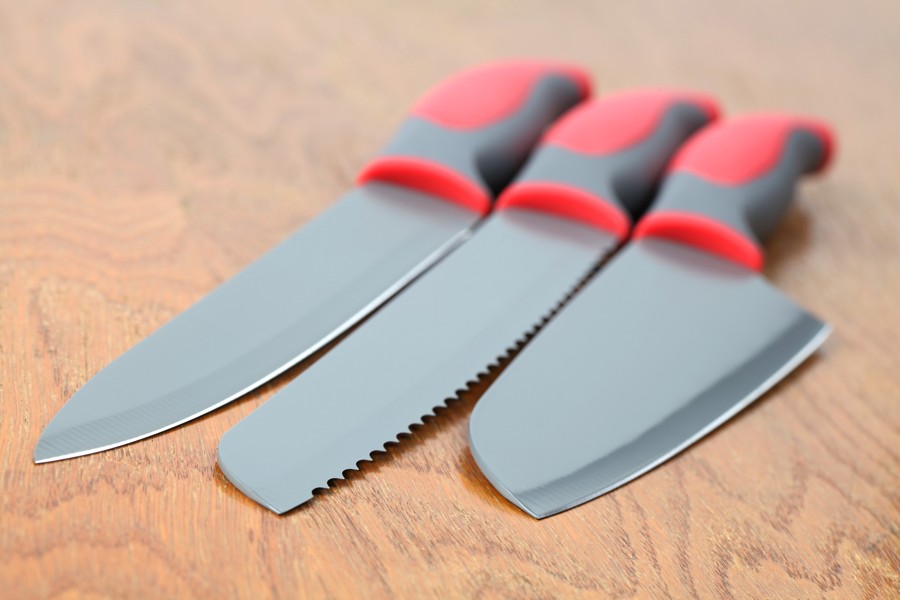Dupont Teflon
From a purely chemical perspective and its terminology, Teflon is polytetrafluoroethylene (abbreviated PTFE or also polytetrafluoroethene) or fluorinated polymer. It was first prepared in test tubes by a chemist at DuPont, Mr. Roy J. Plunkett. However, polytetrafluoroethylene is practically not used; its trade name "Teflon" is well known among housewives. Occasionally, other trade names for polytetrafluoroethylene can be seen, such as Dyneon™ PTFE (formerly Hostaflon™) and Gore-Tex™ (PTFE membranes).

Teflon can be found in places where we would not normally expect it, which is essential to recognize in the modern kitchen.
What are the chemical and physical properties of Teflon?
PTFE belongs to the group of thermoplastics, although even this classification is not entirely accurate, as some of its properties would classify it more into the group named "thermosets." At standard room temperatures, its density reaches approximately 2200 kg/m3, a record high value for plastics. Standard PTFE melts at approximately 327 °C, but its basic properties begin to change around 260 °C. However, when heated above 350 °C, decomposition occurs, and PTFE burns at 500-560 °C.
Unsurprisingly, given its record weight, it is a polymer with a very high oxygen index (95-98), which also classifies PTFE as a self-extinguishing polymer (interestingly, any polymer with an OI of at least 21 is considered as such). This makes PTFE a very useful self-extinguishing polymer used in a wide range of modern products.
Where is Teflon used?
Aside from covering virtually all cookware and kitchen utensils, unexpectedly for some, it is a fact that Teflon can be applied to textile fibers. Then, the material naturally becomes water-repellent. Nowadays, it is relatively common to encounter various Teflon tablecloths and similar items.
What health risks are associated with Teflon?
Pyrolysis of PTFE can be traced back to 200 °C, which is when fluorinated gases begin to sublimate into the surroundings. Studies have shown no significant problems or health risks in humans at temperatures up to 250 °C (with the exception of birds!). The issue is that when PTFE is significantly overheated (at temperatures not commonly found at home), it has the potential to cause symptoms of "polymer fume fever," a flu-like condition that quickly subsides. However, for birds, this fume can be fatal (even very mild exposure to fumes = shortness of breath, coordination disturbances, and lethargy, with higher exposures leading to death) due to their sensitive respiratory systems.

Like any modern technology, Teflon cookware is a good servant when you respect all its properties and risks. Nevertheless, today it is very difficult not to encounter it among cookware and kitchen equipment, generally white goods, so it is definitely good, indeed essential, to know its limits, behavior, and properties well.
We remind you that common kitchen oils and edible fats begin to "smoke" at around 200 °C—this state itself irritates mucous membranes and can cause significant problems in an unventilated kitchen. However, this is still quite far from the limit of 260 °C (the officially permitted maximum temperature mentioned by DuPont), at which Teflon begins to slowly break down. Moreover, hardly anyone systematically heats the Teflon coating "dry" and empty. The formation of fumes has little effect on people, but definitely take birds elsewhere!
To provide a complete perspective, we must also mention the view of the American non-profit activist organization Environmental Working Group (EWP). It has long opposed the use of PTFE, as an increased occurrence of ammonium salt of perfluorooctanoic acid (C8), which causes miscarriages in rats, was found in the blood of seven DuPont employees in 1981. However, this problem should already be resolved since DuPont quickly removed the C8 substance from the manufacturing process.




























































































































